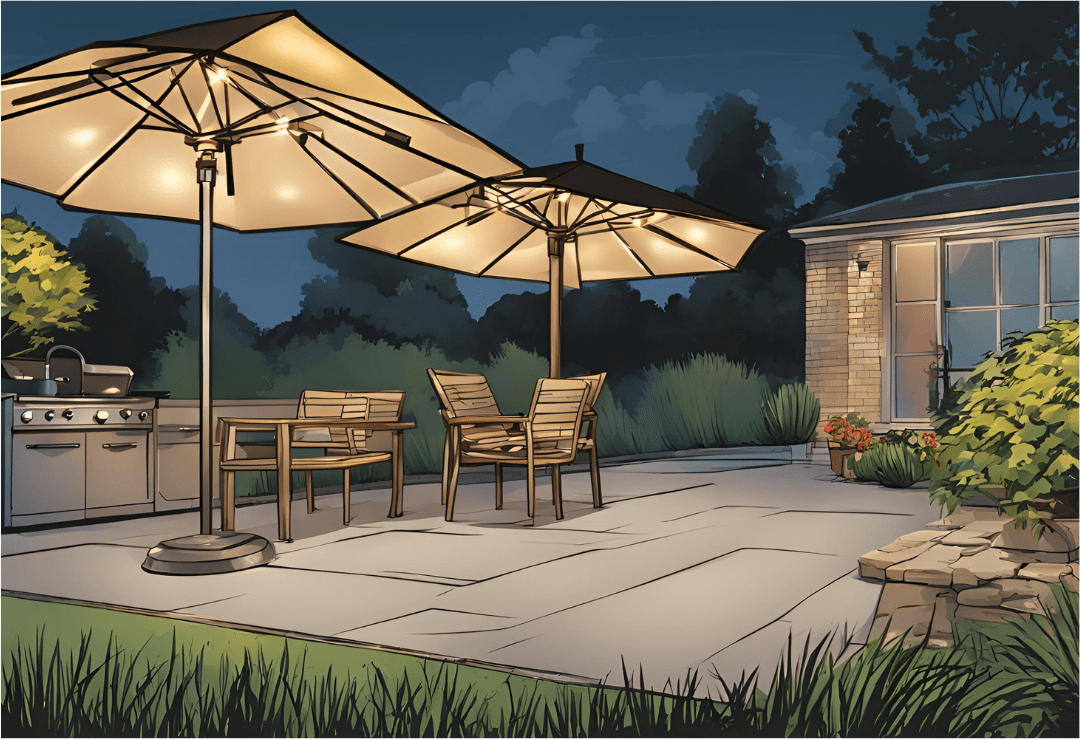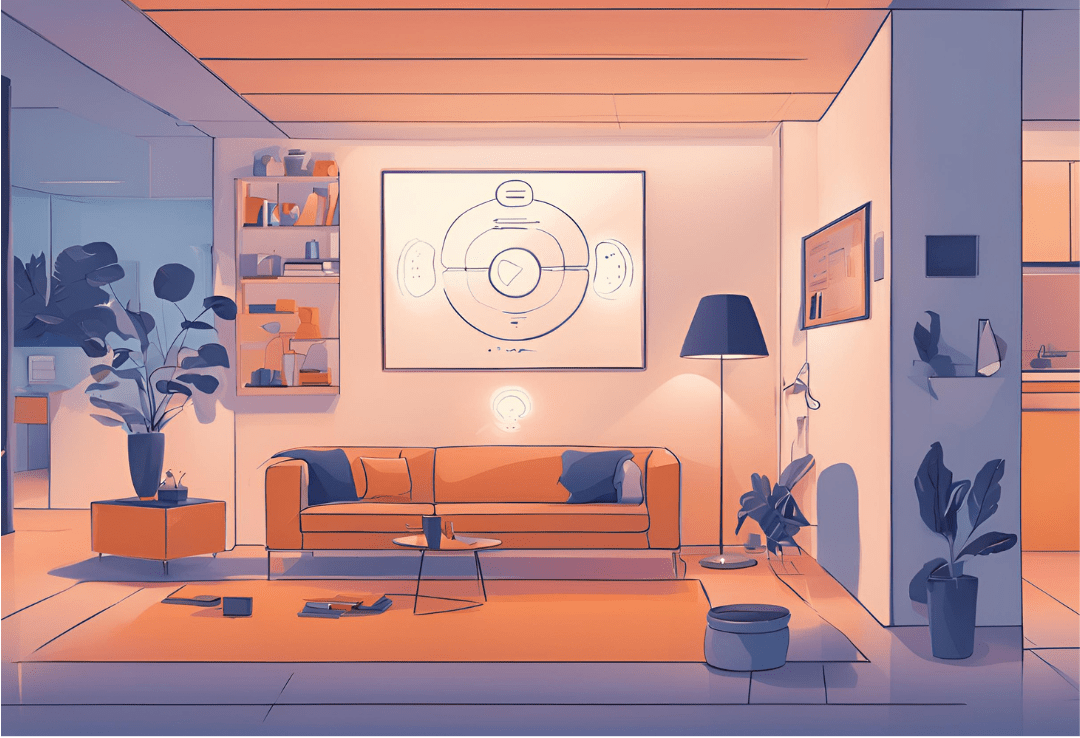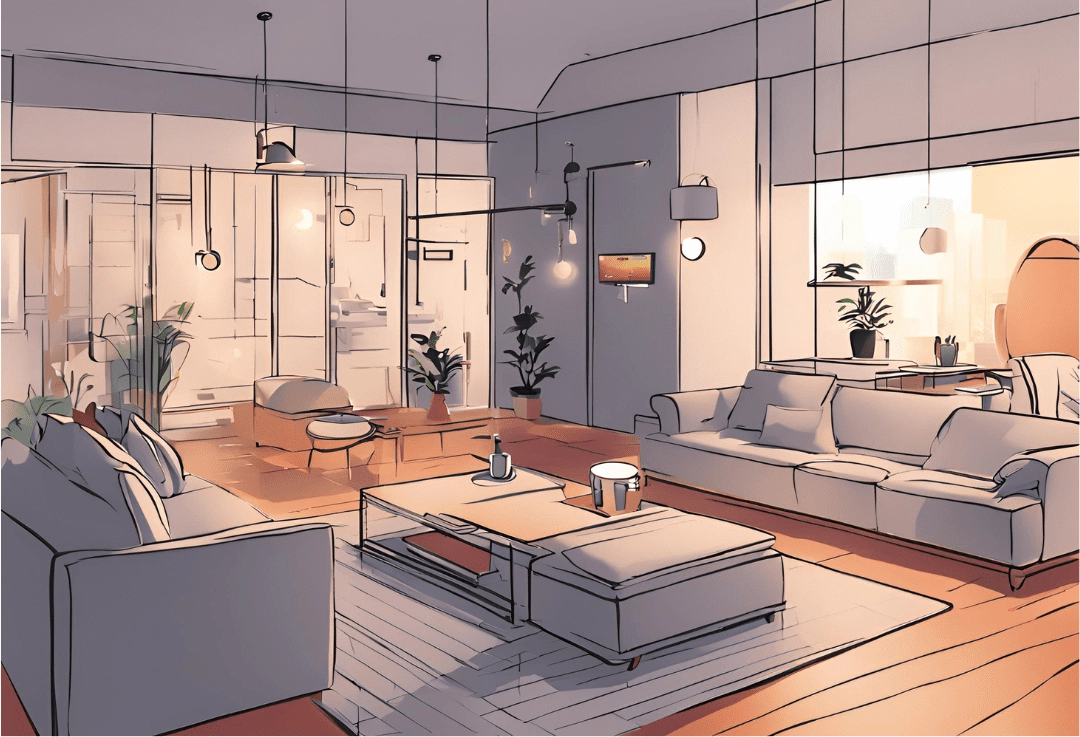One of the main benefits of a smart home system is the ability to control lighting. Whether standard lamps or LED strips and panels, smart lighting can be used as a welcoming glow, an ambient theme, or even a security measure.
Traditionally, specific, dedicated hardware was required to control smart lighting. Increasingly, with the rise of smart home hardware, standalone smart lighting controllers are less common. Instead, smart home hubs with Wi-Fi and other wireless protocols are increasingly being relied upon to control lighting.
But how does smart lighting work, and is your Matter-compatible hub capable of managing your LED strips, panels, and lamps?
What is a Smart Lighting Controller?
A smart lighting controller is a device that can be connected to your home’s lighting system. This adds smart home features to your lighting, such as automation and remote control. Controllers can be standalone, and used for a specific group of lights (usually in close proximity), or they can be connected to a hub that manages multiple groups or rooms.
These controllers connect to your Wi-Fi, and can be managed via a smart phone app or smart assistant. Some models have a dedicated remote control if you prefer to circumvent integrations with third party systems.
Lighting can be anything from standard lamps and bulbs to LED strips and panels. Six wireless protocols are typically used by smart lighting systems to manage lights:
-
Wi-Fi
-
Zigbee
-
Z-Wave
-
Bluetooth
-
Litewave (Nanoleaf’s proprietary protocol)
-
Thread
Note that while previous versions of Thread have provided challenges for smart lighting manufacturers (hence Litewave), the release of Thread 1.4 should change that.
Smart lighting systems typically comprise of
-
A hub, or bridge
-
Smart bulbs and fixtures, where required
-
Sensors for motion, light, and occupancy
-
An app or voice assistant support
As noted, with the integration of smart lighting controllers into smart home hubs, and increasingly Matter-compatible hubs, specific controller units are increasingly rare.
How Does a Smart Lighting Controller or Hub Work?
The basic functionality of a smart lighting controller is to manage the connection between lighting devices, controlling, transmitting, and processing signals and other related data.

Various control methods are available, from physical devices to automated and sensor based controllers. (Physical devices include classic controllers but also some smart devices, such as the dedicated Matter-compatible Flic Twist rotary controller.)
Such functions have largely been folded into smart home hubs over the years. However, bridging hardware can be required where the lights are not Matter-compatible. One example of this is the Philips Hue Bridge, which allows control over Philips Hue lighting via Matter.
Benefits of Smart Lighting Systems
With smart lighting set up, you can enjoy various advantages and quality of life improvement in your home.
- Energy efficiency: controllers can give you better control over lights, ensuring improved efficiency. The most basic option is to set schedules for lights, although you might also use motion sensors to switch lights on or off depending on presence.
- Convenience and comfort: remote control and scheduling of your lights means you can forget about stalking the house for a rogue switched-on lamp. You don’t need to get up if you’ve forgotten to turn a light off – just stay sat down, and use your smart home integrations to switch it off remotely.
- Security and safety: spending a few nights away? With smart lighting, you can create the illusion of still being at home. Think Kevin’s trick with the “party” in Home Alone, deterring the Wet Bandits from attempting to enter the property. A smart lighting controller can be used to orchestrate a scene where by a series of lights goes on and off… perhaps one goes back on, briefly… late at night. It’s a great way to put off opportunist thieves, who are usually interested in easy pickings, rather than challenges.
- Aesthetics and ambiance: with a smart lighting system installed your living area can be enhanced with warm, visually pleasing lighting effects, creating a comforting, welcoming atmosphere.
- Potential for cost savings: ensuring your lights are closely managed and scheduled doesn’t just improve energy efficiency. It can also save money.
Challenges With Smart Lighting
While it might seem like a great addition to any smart home, smart lighting setups can come with some challenges and drawbacks.
Primarily, they are expensive. Whether you’re using Matter to control your lights over a bridge, there is an outlay involved. Switching to Matter-compatible lighting increases that.

In addition, there is the installation process, which can be intensive. With advanced lighting arrangements, hiring a specialist is an option, but this simply adds to the expense.
If you’re building a Matter smart home, ensuring the lamps and LEDs are Matter-compatible is key. While selecting a Zigbee-compatible system (Zigbee is different to Matter) would seem to be a safe option (as Matter should, in theory, be compatible) it’s difficult to make a prediction here. Buying the wrong system could result in further expense down the line. Where possible, view demonstration setups, either in person or on YouTube.
Do You Need a Smart Lighting Controller?
If you’re using a Matter-compatible smart home system, the majority of smart lighting features should already be available.
Whether you need a separate lighting controller or not depends on the type of lighting you plan to use, and if it has Matter bridge functionality. Matter can handle groups of lights, although while it can handle batch scripts as of Matter 1.3 (to avoid “popcorn effect” lighting, where bulbs activate in series), it isn’t the best solution for large groups of lights.
As with any smart home purchase, shopping as smartly as possible is a good idea. While an excellent way to save money and manage your home’s energy use efficiently, you might find other solutions (such as smart thermostat kits to control your home’s central heating and hot water) represent a better solution.
Before committing, spend time exploring the options for smart lighting to help you make the best decision for your home long-term.

